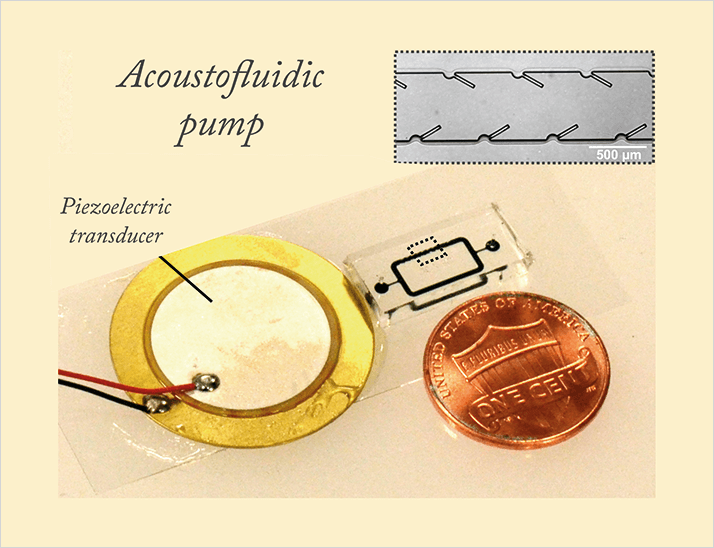The potential of microfluidics and lab-on-a-chip technology is clear, but real-world applications have been slow to emerge. A lack of effective and inexpensive micropump options has been one challenge slowing the pace of development. Now, researchers from Penn State University believe they have the answer: an acoustofluidic pump, powered by a piezoelectric transducer (1). The pump uses acoustic waves to deliver fluids and, because of its low power consumption, it could be easily integrated into cell phone-based pointof- care diagnostic systems.

“Swimmers were our inspiration,” says Tony Huang who led the team. “When we swim, we have to keep our legs kicking, which exerts a force on the water. The water, simultaneously, exerts a force back, making our body swim forward. This is the motion of Newton’s third law. In this case, if we keep our upper body stationary, while consistently kicking, there must be a net force exerted on water to push the flow backward. We started to think about whether we could use previously proposed sharp-edge oscillation to realize fluid propulsion motion.” Indeed, the pump works by acoustically oscillating solid, tilted sharp-edge structures that are constructed onto the sidewall of the microfluidic channel. Upon oscillation, these structures generate acoustic streaming effects, which in turn generate net forces in the direction that the sharp-edge structured oriented. While the idea is relatively simple and the fabrication is relatively easy, the sharp-edge structures are constructed in a silicon mold using deep reaction ion etching, which could be a challenge in terms of mass production.
However, Huang believes the effort is worthwhile as the technology offers several advantages over other micropumps. “Active, on-demand control means that the pump works whenever we want it to,” says Huang. “It can also generate a range of pumping flow rates, from nanoliters to microliters per minute; and the performance can be adjusted by changing the numbers of sharp-edge structures and the voltages applied to the piezoelectric transducer. Perhaps most special of all, it can achieve various kinds of flow operations by programming the input signals to the piezoelectric transducers; the pulsed pumping flow, for instance, can be used to mimic cardiac flow in microfluidic chip to perform cardiovascularrelated studies.”
References
- Po-Hsun Huang et al., “A Reliable and Programmable Acoustofluidic Pump Powered by Oscillating Sharp-Edge Structures”, Lab-on-a Chip, DOI: 10.1039/C4LC00806E (2014).




